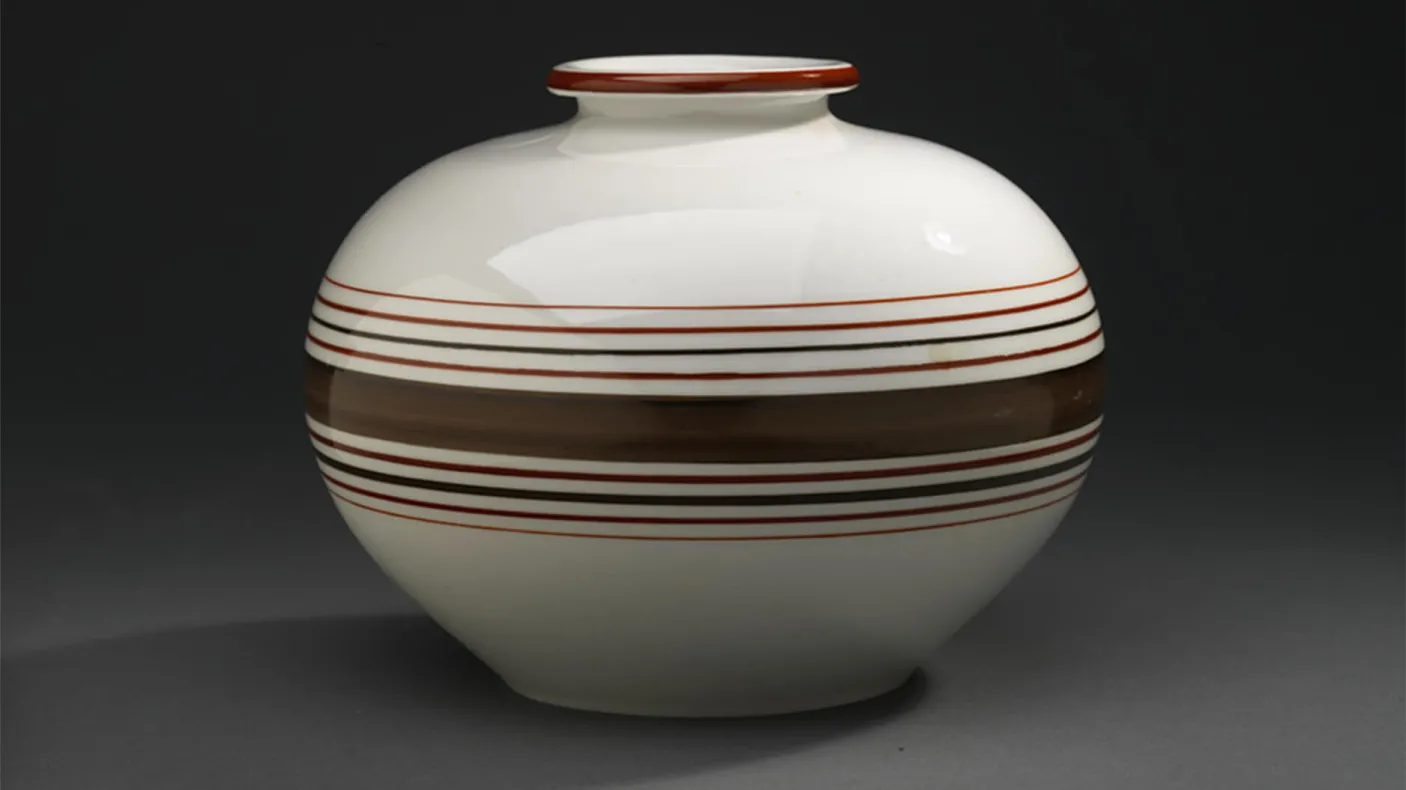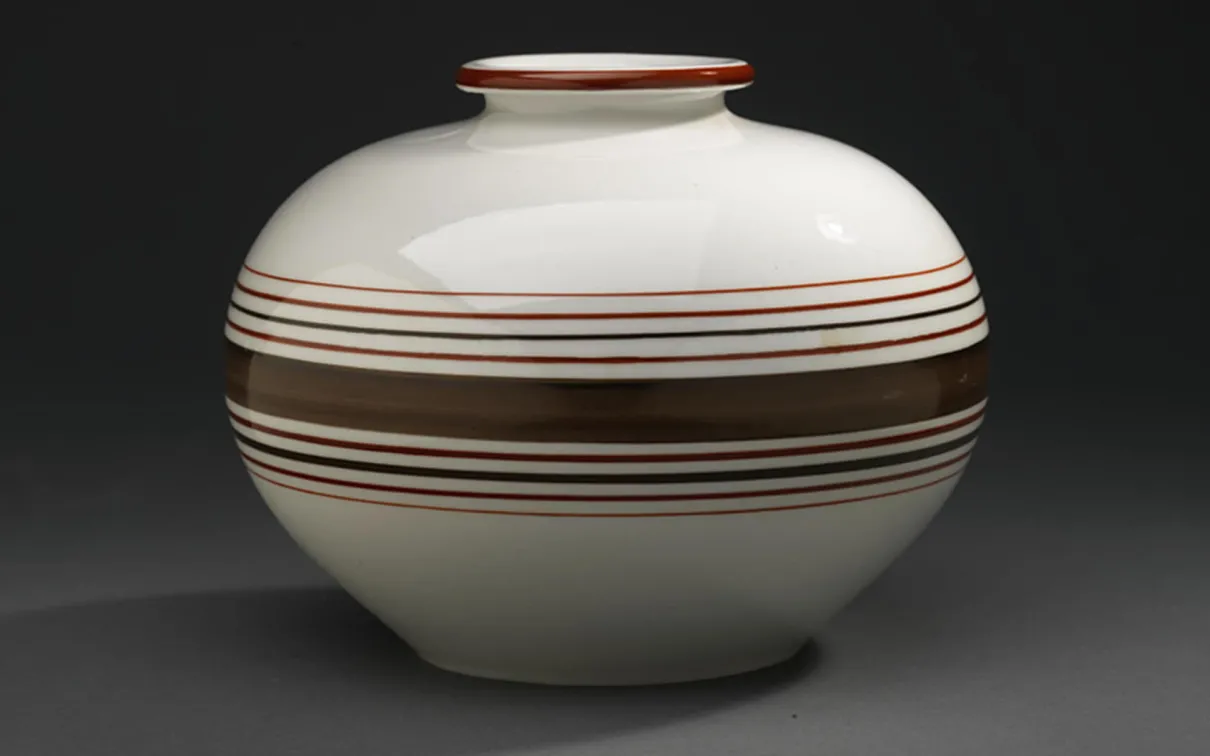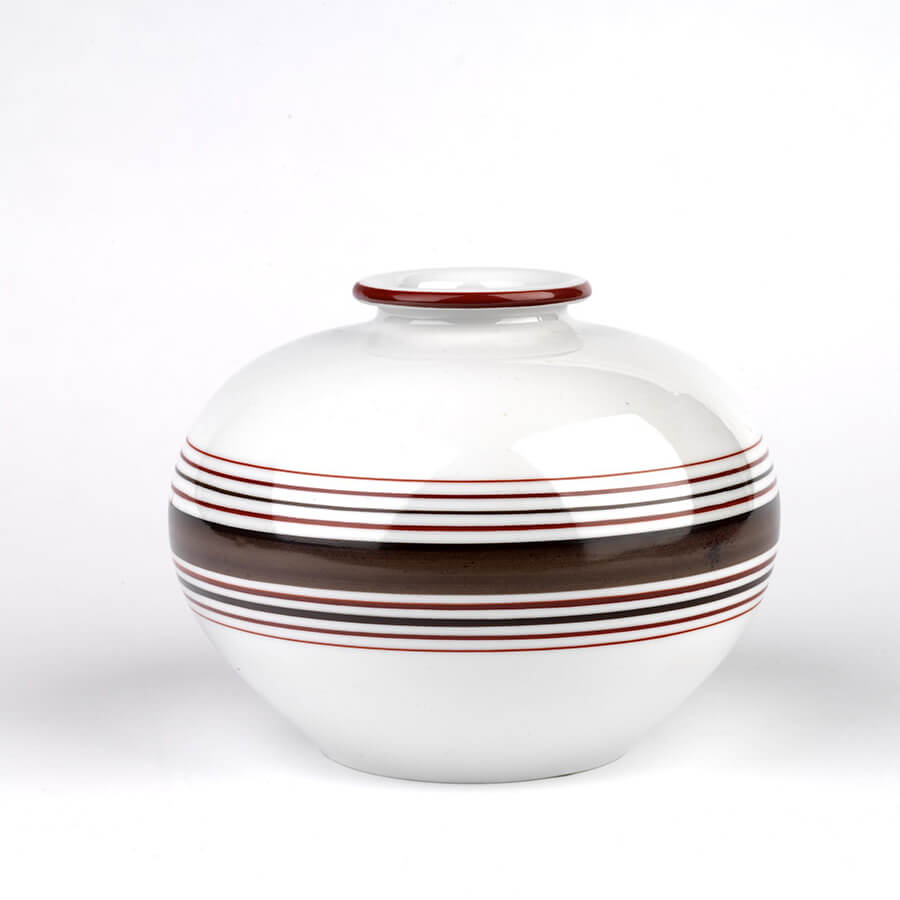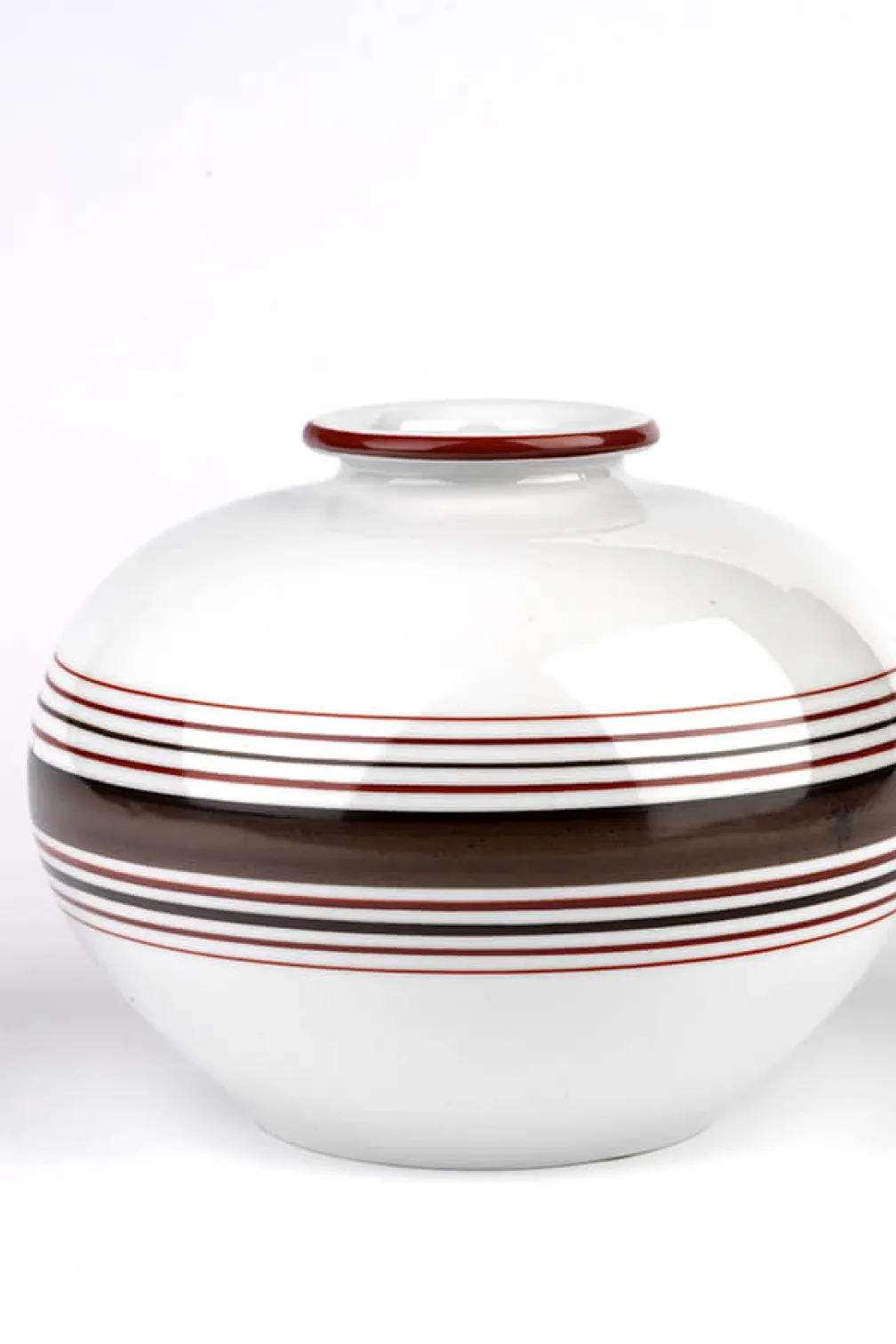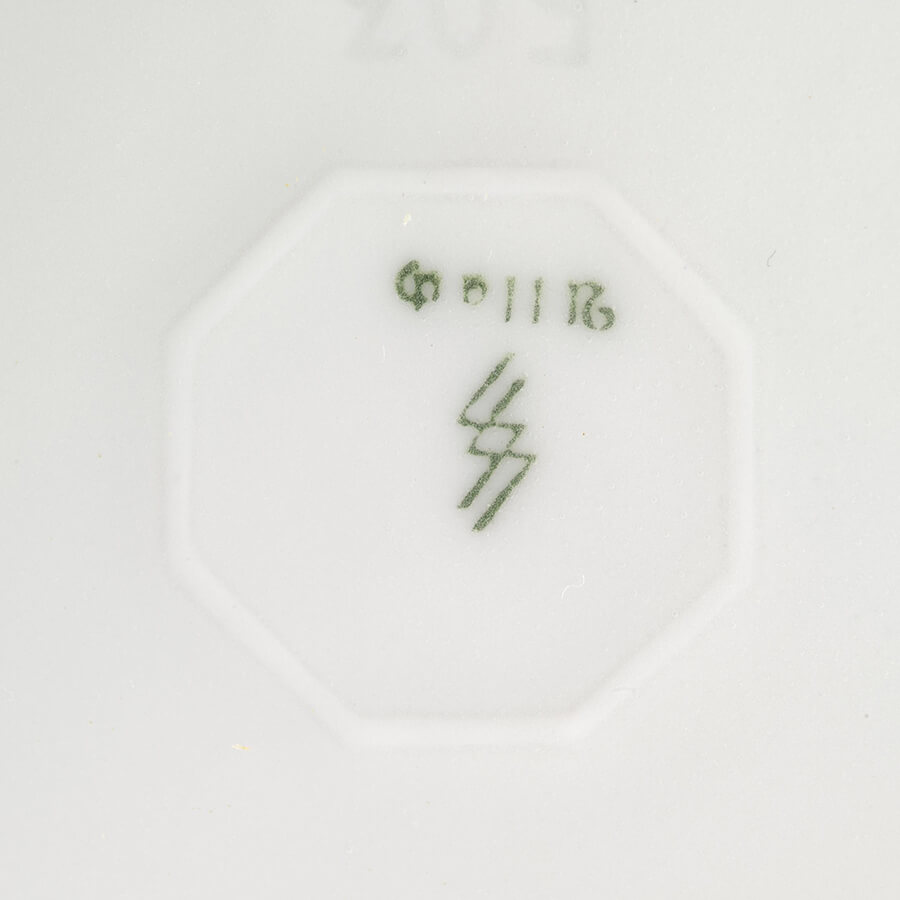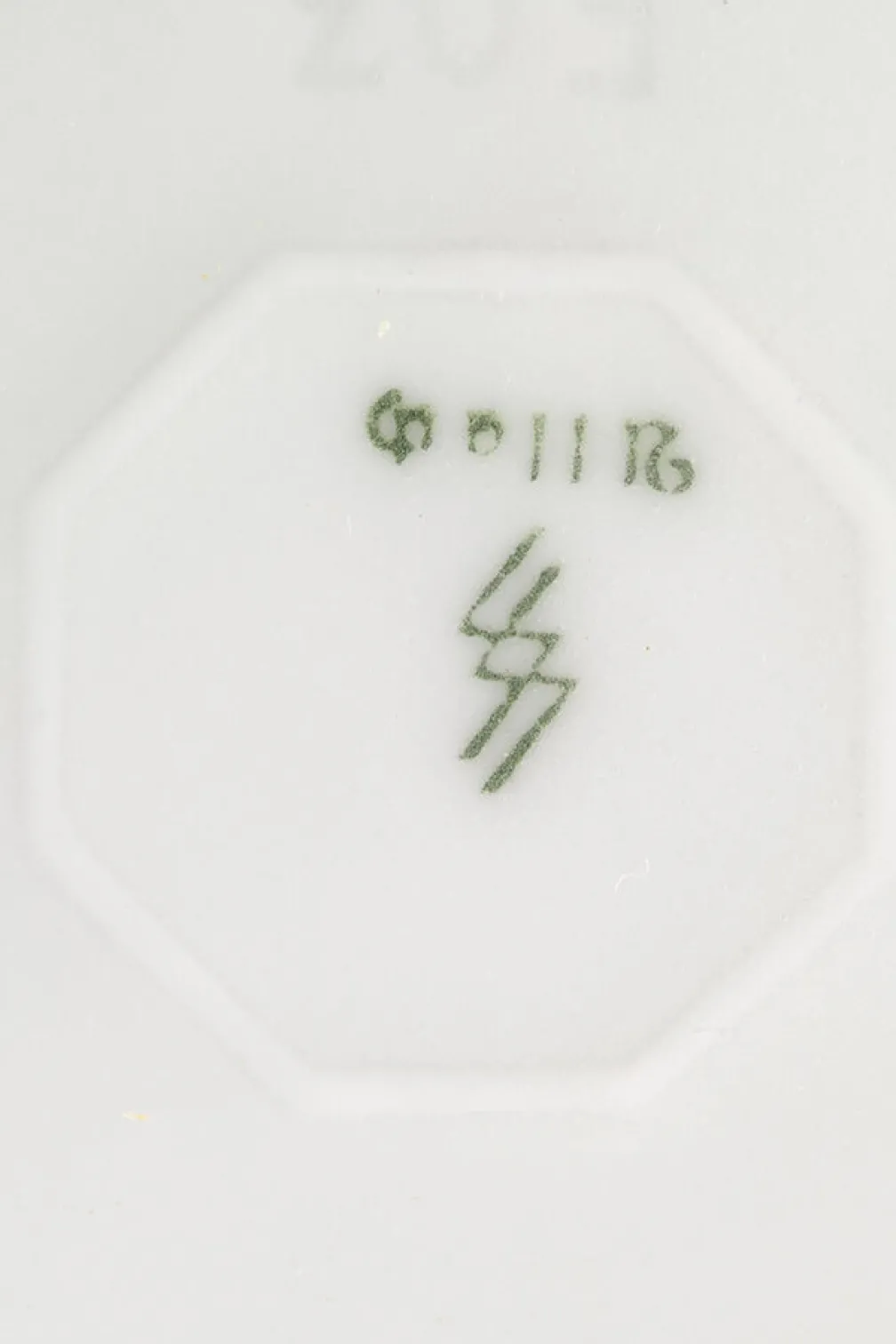Slave Labour and Genocide
A porcelain vase in the ROM’s collections tells a darker story of how the concentration camp system in Germany used forced labour to produce decorative objects for the Nazi party.
Published
Category
Author
In 1935, Franz Nagy
In 1935, Franz Nagy and Prof. Kal Diebitsch set up a porcelain factory in the town of Allach, not far from Munich. In 1936, the factory was taken over by Heinrich Himmler and the SS. In 1940, it was remodelled for production in other ceramic bodies, and by 1943 its porcelain production had been transferred to a sub-camp at Dachau. Here, prisoners worked as slave labourers alongside German workers to produce porcelain statuettes and tablewares sold under the Allach name.
Allach porcelain production continued to the end of World War II, with as many as 3,000 Jews and 6,000 non-Jews held prisoner in the same camp. The factory is but one example of the manner in which industrial production and the concentration camp system became entwined, with slave labour and genocide used for private profit. The luxury wares of the Allach factory were directed toward the satisfaction of the aesthetic tastes of its SS clientele. Close to 240 different models for porcelain statuettes, busts, vases, and other assorted decorative tablewares were developed by the factory between 1935 and 1945.
Gallery 1
This vase from the Allach factory
This vase from the Allach factory has a slightly recessed underside with the impressed model number “503.” In the centre is an octagon containing a conjoined “SS” lightning flash and below it the name “Allach” in Gothic letters. The Model #503 vases came in white and painted forms. The painted vases featured horizontal bands of different colours around the outside circumference.
Excerpted from
Excerpted from Judaica: The Dr. Fred Weinberg and Joy Cherry Weinberg Collection at the Royal Ontario Museum.
